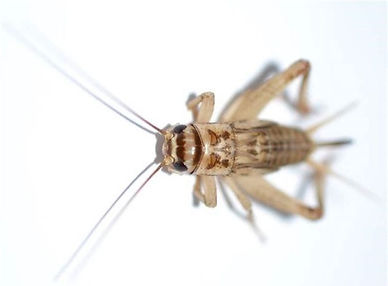Occasional Invaders
Occasional invaders are as abundant as the stars in the sky and can flourish anywhere food, warmth and shelter are available. While most are not harmful or dangerous to humans, they can become a nuisance at the very least. Occasional invaders typically invade living spaces through unsealed cracks and crevices located around windows, doors, brick or loose siding.
Boxelder Bugs
Boxelder bugs are flattened, blackish and about 1/2 of an inch long with red to orange markings on their wings. In the fall, they congregate on the South and West sides of structures for warmth in the sun as they seek shelter for the winter months ahead. Boxelder bugs enter homes and businesses through voids around windows, doors, soffits and vents. In the spring they emerge and actively try to find their way back outdoors.


Centipedes and Millipedes
Centipedes and millipedes are not insects because they have more than six legs, but they are closely related arthropods. Both of these groups of pests have long, segmented bodies. Centipedes have one pair of legs on each segment, where as, millipedes have two pairs of legs on each segmented body part. They require a moist environment in which to live and are most active at night.


Clover Mites
Clover Mites
Clover mites are no larger than the size of a pinhead. They are red, oval shaped and have eight legs. Their front pair of legs are very long compared to their others and are often mistaken for antennae. These nuisance pests can be found crawling on siding, brick walls, window sills and other such surfaces. When crushed, they leave behind a red stain due to their pigmented bodies.

Cluster Flies
Cluster flies are slightly larger than the common house fly and they have a patch of yellowish, golden hairs under their wings. During late summer and early fall, large numbers of these flies "cluster" on the warm sides of buildings as they try to make their way into attics, wall voids, basements and other darkened sites to hibernate for the colder months. They become active again around mid spring when temperatures begin to rise, or sometimes even earlier if their overwintering hiding spaces become warm enough.
Crickets
Clover mites are no larger than the size of a pinhead. They are red, oval shaped and have eight legs. Their front pair of legs are very long compared to their others and are often mistaken for antennae. These nuisance pests can be found crawling on siding, brick walls, window sills and other such surfaces. When crushed, they leave behind a red stain due to their pigmented bodies.

Earwigs
Clover mites are no larger than the size of a pinhead. They are red, oval shaped and have eight legs. Their front pair of legs are very long compared to their others and are often mistaken for antennae. These nuisance pests can be found crawling on siding, brick walls, window sills and other such surfaces. When crushed, they leave behind a red stain due to their pigmented bodies.

Gnats
The gnats you see in and around your home or business could be one of many different small flies. Some of the most common are fungus gnats, fruit flies and drain flies. Fungus gnats typically breed in soggy soil within potted plants. Fruit flies are drawn by ripening fruit and recycling bins. Drain flies begin in sewers and emerge through the drains into the home or business.
Pillbugs and Sowbugs
Pillbugs and sowbugs are similar looking land crustaceans that range in size from 1/4 to 1/2 of an inch long with seven pairs of legs and two pairs of antennae. They are dark to slate gray in color and have body segments resembling armored plates like that of an armadillo. Pillbugs have been given the nickname "rollie-pollies" due to their ability to roll up into a tight ball when disturbed since they lack tail-like appendages. Sowbugs possess two tail-like appendages making them incapable of rolling into a tight ball.
Ticks
Ticks possess four pairs of legs and vary in size and color depending on the species. They feed on the blood of animals and humans alike and are transmitters of various diseases including the most widely associated, Lyme disease. Ticks can be found in forests, grassy areas, empty bird and rodent nesting sites and inside homes when they hitchhike on pets and people.

